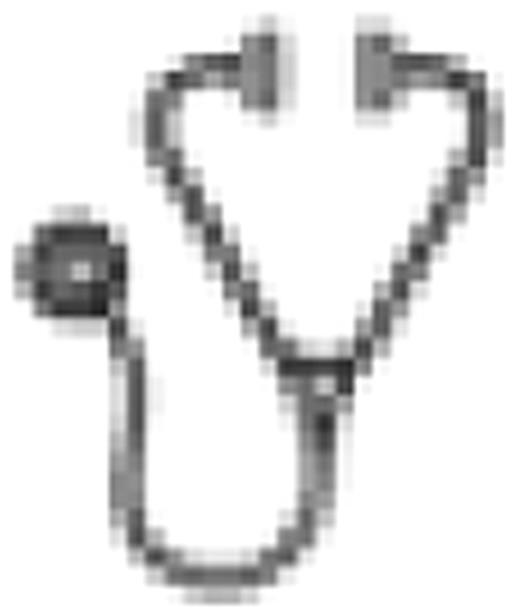Abstract
The HNA-3a/b (5b/a) leukocyte alloantigens were identified in 1964 by van Leeuwen et al. as a biallelic system with gene frequencies of 0.82 (HNA-3a) and 0.18 (HNA-3b), respectively. Despite the passage of more than 40 years, the presumptive protein carrier for HNA-3a/b and the molecular composition of the antigens themselves is unknown. The importance of defining the HNA-3a/b antigens more fully has been heightened by the recognition that HNA-3a-specific antibodies are especially prone to cause severe, often fatal, transfusion-related lung acute injury (TRALI), now the single most important cause of transfusion-related mortality. About 4-5% of the general population is HNA-3a-negative and is at risk to produce HNA-3a-specific antibodies. We performed genome-wide single nucleotide polymorphism (SNP) scanning of DNA from 8 HNA-3a-negative (HNA-3b/b) and 107 unrelated normal individuals and found that each of the HNA-3a-negatives, but only 5 of the normal subjects was homozygous (AA) for a SNP (G>A) located at nt542 of the SLC44A2 gene encoding the choline transporter-like protein CTL2 (p<0.000001 corrected for the number of SNPs surveyed) (Table 1).
Genotypes of unrelated HNA-3a-negative and normal subjects at SNPrs2288904 (G>A542) in the gene SLC44A2 encoding CTL2.
| HNA-3-a negative subjects (n = 8) . | Normal subjects (N = 107) . | ||||
|---|---|---|---|---|---|
| GG | GA | AA | GG | GA | AA |
| 0 | 0 | 8* | 64 | 38 | 5 |
| HNA-3-a negative subjects (n = 8) . | Normal subjects (N = 107) . | ||||
|---|---|---|---|---|---|
| GG | GA | AA | GG | GA | AA |
| 0 | 0 | 8* | 64 | 38 | 5 |
p = 2.4 × 10−12
This SNP (rs2288904) is the only one known in SLC44A2 that correlates with the HNA-3a-negative phenotype and predicts an extracellular amino acid substitution (R>Q154) in the mature protein. Gene frequencies of the high and low frequency alleles of SNP rs2288904 are 0.82 and 0.18, respectively, identical to the gene frequencies of HNA-3a and HNA-3b determined by serologic typing. Although HNA-3a is widely considered to be a neutrophil antigen, we found that lymphocytes carry slightly more HNA-3a than neutrophils, and that persons heterozygous for HNA-3a have 50% as much antigen as homozygotes, allowing heterozygotes to be identified by flow cytometry. To validate the SNP analyses, we directly sequenced DNA encoding CTL2 from 4 HNA-3a/a, 4 HNA-3a/b and 8 HNA-3b/b subjects and found that, without exception, nt542G and nt542A correlated with the phenotypes HNA-3a and HNA-3b (determined serologically), respectively. To obtain direct evidence that HNA-3a is carried on CTL2, we sensitized leukocytes with anti-HNA-3a, immunoprecipitated antibody-bound proteins, performed SDS electrophoresis and subjected candidate bands to mass spectrometric analysis. In three independent assays, peptides derived from CTL2 spanning the entire length of the protein were identified (p<0.0001). We conclude that the HPA-3a antigen results from substitution of G for A at nt542 of the SLC44A2 gene, leading to insertion of R for Q at position 154 in the first extracellular loop of CTL2. CTL2 is predicted to have ten transmembrane domains, five extracellular loops, several N-linked oligosaccharides and intracytoplasmic tails at both C- and N-terminae; this complexity probably explains the failure of previous attempts to identify it as the carrier for the HNA-3a/b antigens by immunochemical methods. The function of CTL2 is unknown. However, cross-linking of the antigen by anti-HNA-3a in neutrophils triggers an explosive activation of primed cells, indicating that CTL2 is functional in this cell type and providing a possible explanation for severe TRALI reactions seen in patients transfused with CTL2-specific antibody. Recognition of the molecular basis for the HNA-3a/b antigen system will enable large scale, low cost screening of blood donors to identify the HNA-3a-negative subpopulation that may have HNA-3a-specific antibodies capable of causing TRALI and should facilitate the production of target molecules carrying these antigens that can be used to screen for such antibodies in blood donors and patients.
No relevant conflicts of interest to declare.

This icon denotes an abstract that is clinically relevant.
Author notes
Asterisk with author names denotes non-ASH members.

This feature is available to Subscribers Only
Sign In or Create an Account Close Modal